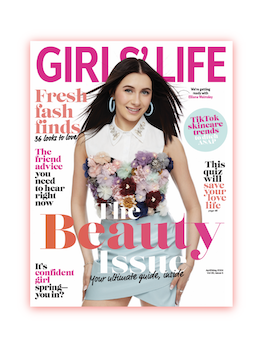STYLE
Fashion
We investigated the origins of the tie-dye craze

Image: pinterest.com
There's been a surge in fabric with meshes of swirly, colorful patterns. In the summer of 2019, Vogue confirmed tie-dye as a huge Insta trend, and it's stayed on every fashionista's radar since. Whether it's manufactured and sold in large quantities, or made with rubber bands in the eve of summer with accompanying glasses of lemonade—tie-dye is everywhere.
While tie-dye was notably at a height during the counterculture movement of the 1960s-70s, that isn't its earliest origins. Tie-dye has dated back to 4000 B.C. in India. Indian bandhani was an early tie-dye technique used in textile design, in which patterns were created from tiny pinched circles. Shibori, a tie-dye technique that is just as old, is an Eastern Japanese fabric manipulation that creates shapes reminiscent of spiderwebs.

Image: instagram.com/karenbritchick
Bandhani and shibori method
Bandhani was done as early as 4000 BCE. Bandhani comes from the Sanskrit word "Bandh," meaning "to bind or tie." The process involves using thread to tie off little pieces of fabric in an array of dynamic patterns, followed by dipping the fabric in dye. Bhandanis have appeared in ceremonies like funerals and weddings for thousands of years.
Shibori, a version of tie-dye created with indigo dye, as it was most readily available at the time, has been around in Japan since 552 CE. There are various ways of doing the shibori method.
In textile scholar Yoshiko Iwamoto Wada's book, "Shibori: The Inventive Art of Japanese Shaped Resist Dyeing," the author stated that the shibori technique originated in China, but did not take off in Japan until the 17th and 19th centuries. This is when lower social classes were banned from wearing silk, and seeking something extravagant to wear.

Image: instagram.com/zsp_fashion_art_studio
Rebellion against norms in the 60s and 70s
Tie-dye represented a movement that went against societal norms in the 1960s-70s. It characterized the hippie movement, which rejected violence, capitalism, materialism and conformity. Instead, the people who helped establish the tie-dye trend preached love and peace, broke barriers and broached independence with eccentric swirls and patterns in a variety of colors—for a great price at that.
The Woodstock festival and movement of 1969 was not shy of the colorful pattern, as musicians like Janis Joplin, Joe Cocker and Mama Cass graced the stage in the trendy statement. Rit Dye, a fabric dye company established in 1918, was struggling in the mid-1960s, and sought out artists to make "several hundred tie-dye t-shirts to be sold at the festival."

Image: instagram.com/alexfrstr
Today, tie-dye is making a major comeback. It could be credited to the vast change and unrest in 2020—similar to that of the 1960s-70s—including but not limited to black rights, women's rights and environmental issues.
Furthermore, social distancing as a result of the COVID-19 virus has ushered tie-dye more into mainstream culture. Fun crafts that can be done at home are a must, and tie-dying everything we can get our hands on including aprons, t-shirts and face masks is the move. The tie-dye craze has *definitely* skyrocketed, and we don't see it plummeting anytime soon.
Tag us in your best tie-dye moments on Insta @girlslifemag!

 become a contributor
become a contributor


















